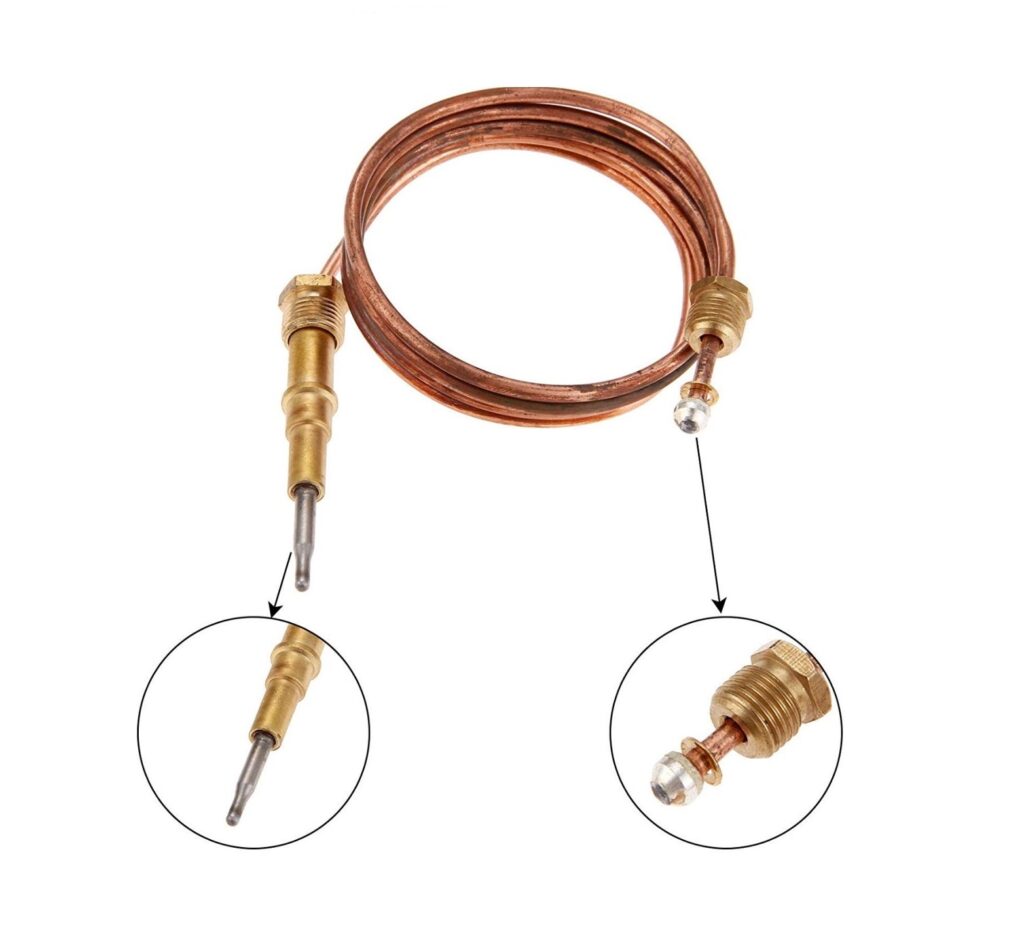Why is the comparison between Thermocouple vs. Thermopile too important? The main difference between Thermocouple and Thermopile is their method of measurement. The thermocouple is a thermoelectric instrument, while the thermopile is an instrument that modifies thermal energy into electrical output. This post presents a fundamental comparison to explore the Thermocouple vs. Thermopile sensor completely and provides the main differences between Thermocouple and Thermopile working principles.
Depending on your application, you can find all the information you need about thermocouple or thermopile equipment and devices on Linquip’s website. If you have any questions about thermocouples or thermopiles, Linquip’s team of experts is ready to assist you. To learn more about thermocouple, please take a look at Linquip’s article, “What Is Thermocouple?“.
Interested users can also register as Linquip Experts to take advantage of all the services offered. Have you considered writing a Guest Post for Linquip? As a guest, you are able to submit content through the Linquip platform.
⇒ View a List of Thermocouple for Sale and Their Suppliers ⇐
How We Write this Blog Post about Thermocouple vs. Thermopile
As experienced technical writers, we understand that providing accurate and informative content about a topic like Thermocouple vs. Thermopile is essential for our readers. To ensure that our blog post is up to par with our readers’ expectations, we follow a specific process to write each article.
First, we spend time conducting in-depth research on the topic. This includes consultations with our experts, browsing trusted web pages, and reviewing any relevant technical papers. Our goal is to gather as much information as possible so that we can provide a comprehensive explanation of the difference between Thermocouples and Thermopiles.
Once we have a good understanding of the topic, we start planning our article. This involves determining the structure, choosing the right language and tone, and drafting an outline. We make sure that our article is organized, easy to understand, and covers all necessary points.
Next, we begin writing the article. This process involves drafting the content and adding relevant images and diagrams. We use clear, concise language that is easy for our readers to understand. We also review our work to ensure that there are no errors or inconsistencies.
Finally, we edited and proofread the article. This involves checking for grammar, spelling, and punctuation errors, as well as ensuring that the article is well-structured and flows smoothly. We also make sure that the content is up-to-date and accurate.
In summary, writing a blog post about Thermocouple vs. Thermopile requires a comprehensive understanding of the topic, extensive research, excellent planning, clear writing, effective editing, and constant attention to detail. By following this process, we aim to provide our readers with informative and useful content that meets their needs.
Thermocouple vs. Thermopile – What’s the Difference?
Thermocouple vs. Thermopile is a controversial subject in the field of measurement. Both the thermocouples and thermopiles employ the thermoelectricity principle to produce electricity by sensing the temperature. These instruments appear in various conditions, including applications like fireplace inserts and gas fireplaces. Explaining the differences between the thermocouple vs. thermopile subject needs an understanding of the differences in the working principle of these two instruments completely. Regardless of the scientific difficulty of knowing the thermocouples and thermopiles, their fundamental principle through a brief explanation is provided in this post.
As discussed before, the main difference between a thermocouple and a thermopile is that the thermocouple is physically a temperature sensor containing two dissimilar metals combined at a particular point; a voltage is generated that has relation with the temperature variation between the two parts introduced as junctions. However, the thermopile is an electronic instrument that transforms thermal values into electrical outputs normally manufactured employing the series arrangements of special thermocouples.
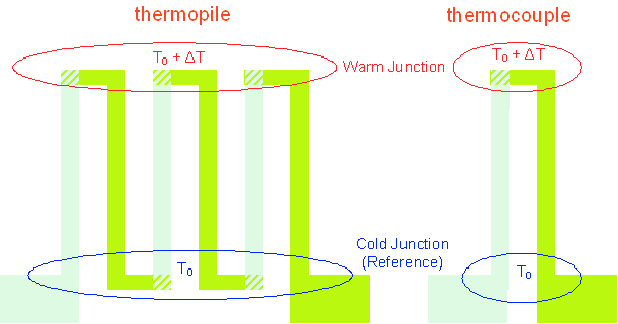
Thermocouple Definition
Thermocouples were first constructed after the exploration of the thermoelectric phenomenon by Thomas Johann Seebeck in 1821. Seebeck found that joining special junctions between two wires constructed from dissimilar materials produces a voltage that is proportional to the temperature variation between those junctions. This voltage can be used to detect the temperature.
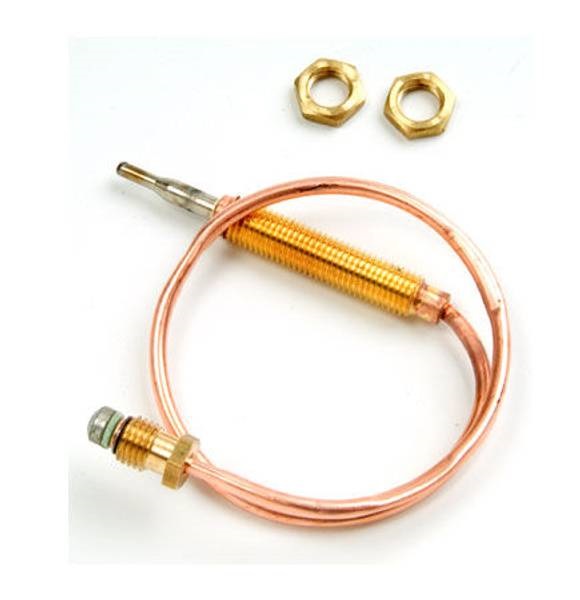
A thermocouple fundamentally is an electrical device containing two wires created of various metals joined together. They operated like electrical conductors producing electrical outputs at differing temperatures. The heat comes at one section, circulates, and moves down at each wire. When it backs, it produces electricity. The voltage of this electricity provides a precise reading of the temperature between the different parts of the system.
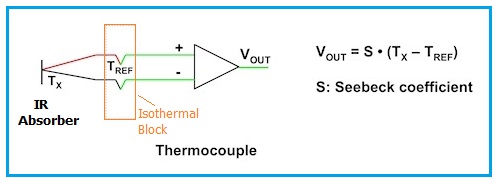
Simple or useful thermocouples are interchangeable, inexpensive, and are supplied with particular connectors. They can sense a broad range of temperatures. Thermocouples are self-powered and need no additional format of excitation in comparison with most other ways of temperature detecting. However, the considerable limitation of any thermocouple is precision. For example, system errors with values less than 1°C can be problematic to sense precisely with them.
Thermocouples are the most useful type of temperature detectors. They are widely used in scientific procedures and industrial applications. These applications contain temperature sensing for kilns, diesel engines, gas turbine exhaust, and other industrial functions. They are also utilized in buildings, offices, and other rooms as the temperature detectors in the thermostat system or as flame measurement at safety systems for gas-powered applications. If you want to explore more about this type of temperature sensors, visit our “What is a Thermocouple” post
Thermopile Definition
A thermopile is an electronic instrument that modifies thermal power into an electrical one. It is also introduced as a Power pile. A thermopile may include several thermocouples combined normally in series or rarely in parallel forms. This format of connection can produce more outputs than employing a single thermocouple.
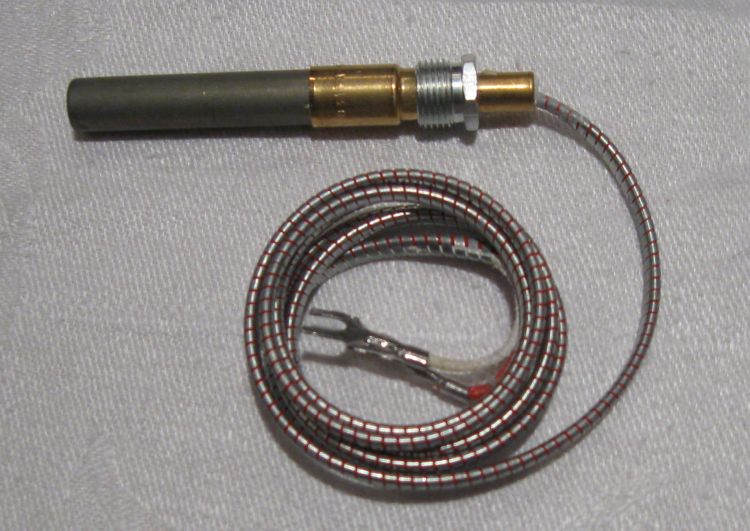
Each extra thermocouple located in a thermopile raises the ability of the system to generate electricity. For example, if a thermocouple produces two volts of electricity, and a thermopile includes five thermocouples, it can produce two volts outputs per thermocouple for an overall of eight volts. So, most thermopiles generally have five or more thermocouples joined together.
The most usual subject with thermopiles is the wiring connectors to detect low millivoltage outputs that are very loose. You require to have appropriate wiring connections when using thermopiles in your applications because you may meet new problems with such a few values of voltage.
Thermopile Installation
- The wiring connections should be free of corrosion and completely clean.
- Long wire lengths may cause some issues in the system.
As discussed before, the thermopile includes nothing more than a series of particular thermocouples. Thermopiles can identify radiation in the surrounding in addition to sensing temperature variation and producing electricity. If you want to comprise thermocouple vs. thermopile more precise, you should consider that both thermocouples and thermopiles should employ a system that modifies the voltage of the wire to a temperature output when utilized to sense the temperature.
Thermopiles can be employed to measure the temperature variation from their junction section to the point where the thermocouple output voltage is produced. These thermocouples should be joined in series form with a particular junction placed on the other side of a thermal resistance cover. The output extracted from this section is a voltage that is straightly related to the temperature variation through the thermal resistance cover.
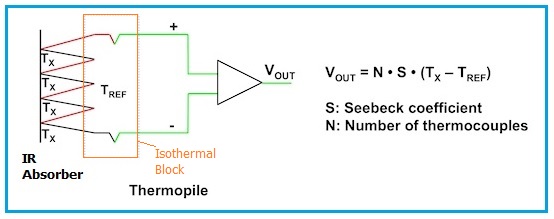
Additional thermocouple pairs in the series format can increase the intensity of the voltage output. Thermopiles can be designed with a single design, two thermocouple modeling, or more thermocouple pairs. They don’t react to the temperature absolutely but produce an output voltage related to the local temperature variation or gradient of temperature.
Thermopile Applications
Thermopiles are employed to supply an output to the temperature variation as a part of a temperature sensing system like the infrared thermometers commonly utilized in medical applications to sense the body temperature, or in particular, accelerometers to detect the temperature profile within the sealed cavity of the transducer.
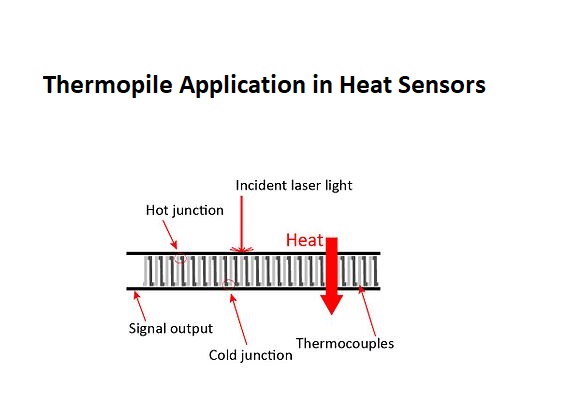
They are also utilized in pyrheliometers, heat flux systems and gas burner controllers for safety applications. The output of the system is typically between tens to hundreds of millivolts. The system may be used to supply special temperature averaging in the form of increasing the signal situation. They are also employed to produce electrical energy from radioactive materials, solar wind, heat electrical parts, laser combustion, or radiation. The procedure of generating energy is also an example of the Peltier phenomenon or electric current moving from heat power.
The Main Differences between Thermocouple vs. Thermopile
There are three main differences between thermocouple and thermopile. The most obvious difference is that thermopiles include a series of interconnected and special thermocouples, which means that any system using thermopiles technically includes thermocouples.
Both thermocouples and thermopiles present precise temperature sensing; nevertheless, thermopiles produce more electricity, and it makes them more accurate in applications that employ them to produce electricity, not just to sense temperature.
Also, while both instruments identify radiation, thermopiles operate much more precisely, with a higher degree of sensitivity. The next figure provides a full comparison between thermocouple vs. thermopile transducers.
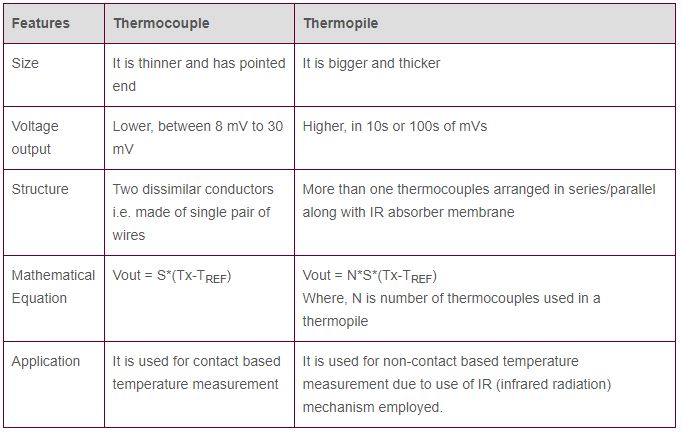
Thermocouple vs. Thermopile in Fireplaces
Fireplace inserts and Gas fireplaces utilize thermocouples and thermopiles to produce electricity. Thermocouples and thermopiles utilize the thermoelectricity effect to produce electricity by sensing the temperature. When the system is turned on, the pilot in a gas source produces heat, which moves inside the thermocouple. When the heat receives the next junction signal of the thermocouple, it starts to produce the electrical output. The fireplace uses this voltage to run the gas valve section, permitting gas to move and begin a firing process. Visit here to explore more about the differences between thermocouple vs. thermopile in fireplaces clearly.
Fireplaces with thermopiles can be attached to thermostats for temperature monitoring because thermopiles produce more electricity than thermocouples. On the other hand, fireplaces with thermocouples lack suitable electrical output in this process. So, thermocouples are basically utilized to detect the temperature in fireplaces, whereas the thermopiles are typically used to create electricity to run the valve and regulate temperature when employed a thermostat. Detecting this electricity voltage presents a precise temperature output between each section of the thermocouple pairs.
As explained before, A thermopile has multiple thermocouples and the more thermocouples utilized in a thermopile, the higher its capability to generate electricity will be. When you comprise thermocouple vs. thermopile, it would be obvious that thermopiles are more sensitive and precise to identify radiation than thermocouples.
Thermocouple vs. Thermopile Replacement
If you can set up the pilot light at the fireplace but the pilot light won’t work continually, there is a great opportunity that the thermocouples of the thermopile in the gas fireplace will need to be replaced.
According to the fact that a thermocouple vs. thermopile is designed to be insulated by the flame of pilot light repeatedly, it’s usual that carbon materials will be more problematic over time and cause to reduce their effectiveness. Both instruments are too simple and inexpensive to replace, but it’s quicker and cheaper to clean them first before the replacement process.
If your fireplace has not been serviced and cleaned in the last two years by a building professional, it certainly needs a complete cleaning. However, if it has, the replacement procedure should be applied to it to solve its problem.
Is It Possible to Install a Thermocouple Instead of a Thermopile?
It is impossible for a technician to use a single thermocouple in place of a thermopile since the thermopile is made up of thermocouples that are connected and arranged in series or parallel. Thermocouples, however, do not perform their function the same way as thermopiles do.
You can’t use thermopiles and thermocouples interchangeably. If you need to replace a temperature sensor like a thermocouple or thermopile, make sure that the component you purchase is the correct one.
FAQs about Thermocouple vs Thermopile
What is the advantage of a thermopile over a thermocouple?
Compared to a standard, conventional thermocouple sensor device, it has a higher voltage output. It makes use of the idea of infrared radiation from the thing being measured being absorbed. The thermopile sensor’s electrical output varies with temperature in direct proportion.
How are thermocouples connected to make a thermopile?
Thermocouples employ several thermocouples linked in parallel or series. For contactless temperature sensing, thermopiles are utilized. A thermopile’s job is to convert the heat radiation that an item emits into a voltage output. Tens or hundreds of millivolts or less are the range of the output.
How long does a thermopile last?
There is no established lifespan or rate of depreciation for thermopile sensors. Thermopiles may persist for years or even decades while still functioning well if they are utilized and maintained correctly.
Does pressure affect thermocouple?
As the pressure goes up, the wire in the thermocouple loses more heat, so the electromotive force (emf) from the thermocouple goes down. The thermocouple’s output signal is a nonlinear function of pressure.
Can a thermocouple replace a thermopile?
But thermocouples don’t carry out their task in the same manner as thermopiles do. Thermocouples and thermopiles are not interchangeable. Be sure the part you choose is the right one if you need to replace a temperature sensor such as a thermocouple or thermopile.
Download Thermocouple vs Thermopile PDF
If you would like to read this article whenever you like, you can download it as a PDF file.
linquip.com-Thermocouple vs Thermopile A Complete Comparison Advantages of Each Type
Watch Videos about Thermocouple vs Thermopile
For more information about Thermocouple vs Thermopile, watch this video about Thermocouple vs Thermopile.
Buy Equipment or Ask for a Service
By using Linquip RFQ Service, you can expect to receive quotations from various suppliers across multiple industries and regions.
Click Here to Request a Quotation From Suppliers and Service Providers
Read More on Linquip
- Thermistor vs. Thermocouple: Complete Comparison & Practical Selection Guide
- What is a Thermocouple & How Does It Work?
- Working Principle of Thermocouple: 2022 Guide + Diagram
- What is the Core Difference between Thermistor and RTD?
- Difference Between Thermopile and Thermocouple
- Difference Between Thermistor and Thermostat: Which One Outperforms the Other?
- Photoelectric Transducer: Application & Working Principles
- 4 Types of Thermowell: Application and Duty
- What is Thermowell? Types & Working Principle
- Types of Thermometers: All You Need to Know
- What Is a Digital Potentiometer? An Explanation on the Working Principle and Advantages
- A Good Look at Types of Thermostats
- Beginners Guide: What Is a Spectrophotometer
- Thermocouple Types: A Complete Comparison Between Them
- What is a Thermocouple & How Does It Work?

